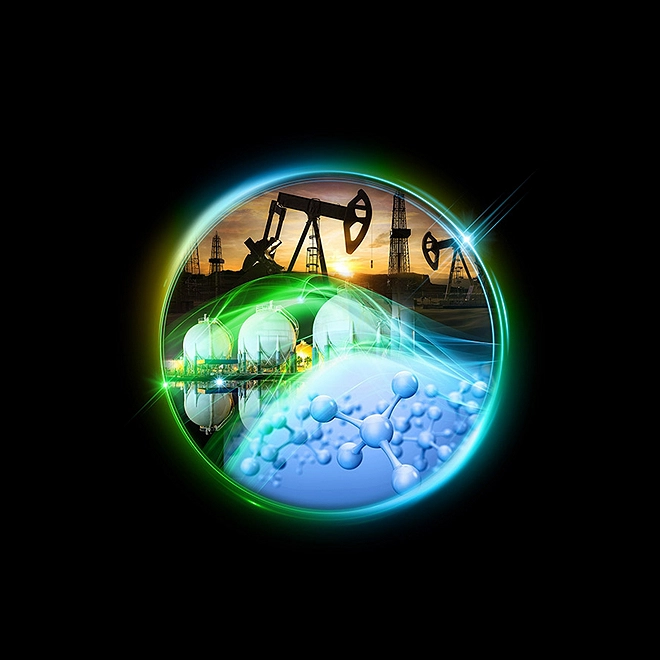Catalyze clean hydrogen supply and demand
Innovative business models to strengthen hydrogen infrastructure
Clean hydrogen could play a key role in helping to meet 2050 decarbonization objectives, yet widespread investment in hydrogen infrastructure has stalled due to uncertainty. Hydrogen’s "chicken or egg” problem—which comes first, supply or demand—understates the complexity of an issue driven by economic, regulatory, and technological uncertainty. Explore 13 innovative business models that could help the industry move closer to a clean hydrogen economy in our report.
Advancing the clean hydrogen value chain
The low-carbon intensity—or "clean"—hydrogen market is far from where it needs to be to meet 2050 global decarbonization objectives. To achieve net-zero greenhouse gas emissions by the same year, the clean hydrogen market will need to produce roughly six times current global hydrogen supply. According to Deloitte analysis, that is achievable under the right conditions. Those conditions cannot exist without decisive policy support to help create the foundation for market development.
In this report, our focus turns to players in the private sector who struggle with how to mitigate perceived risk in the early stages of market development, even in regions with relatively attractively policy conditions on account of a simple realty. While we know how to produce clean hydrogen, it remains prohibitively expensive relative to alternatives for many businesses. While costs will likely come down, progress toward a robust global hydrogen economy has been slowed by uncertainty across the value chain. Many would-be hydrogen suppliers fear demand is inadequate, and many would-be buyers fear that cost-competitive supply is uncertain. For potential investors in infrastructure that could catalyze future growth, that uncertainty is palpable.
Many have come to refer to this as the “chicken-or-egg” problem in clean hydrogen: what comes first, the supply or the demand signals … or even the enabling infrastructure? That likely understates the complexity of the situation: It might more aptly be described as the “systemic first mover dilemma” in clean hydrogen.
Deloitte and Princeton University’s Andlinger Center have recently teamed up to explore the challenge. Working with industry participants at each stage of the hydrogen value chain, we identified at least a dozen points in the development, production, and distribution of clean hydrogen where the first mover problem exists, and it goes well beyond suppliers and off-takers of the clean hydrogen itself.
Five key uncertainties in the clean hydrogen market
The hydrogen infrastructure investment dilemma, grounded in lagging business model solutions, is appears to be rooted in five key uncertainties present in today’s clean hydrogen market. The uncertainties align with the factor conditions needed to accelerate the hydrogen economy. For more information on the factor conditions, consult Deloitte’s "Hydrogen: Making it happen" report.
|
Demand |
What if demand sectors don’t contract for clean hydrogen at scale because of perceptions about price curves? Can companies access the needed financing mechanisms? |
|
Regulatory |
What if provinces/states, countries, and international bodies adopt contradicting regulations? |
|
Technology |
Which technologies could become the industry standard, and what if companies slow investment for fear of picking the wrong ones? |
|
Production and infrastructure uncertainty |
What if there’s insufficient production, or the cost is inhibitive? What if infrastructure investment isn’t enough, or built on time? |
|
Collaboration |
What if participants slow their outreach or become skeptical of possible partners to protect their own interests? What if only the biggest and fittest call the shots? |
13 business models to expand the hydrogen value chain
Deloitte’s research finds innovative, real-life business model solutions that can help address these uncertainties. Some are present in the hydrogen industry today; others come from more mature energy industries that relied on business model innovation when they were in nascent stages of their own. By applying these solutions, businesses may finally crack the first mover dilemma in clean hydrogen at scale.
Here, we highlight thirteen models to illustrate the value they can bring. If implemented, these solutions could help address the first mover dilemma and move us one step closer to a scaled clean hydrogen economy.
Achieving clean hydrogen’s potential
Clean hydrogen’s potential to enable a net-zero future is immense but achieving that potential will require thoughtful investment and fresh approaches from businesses across the value chain. With the help of innovative business models, business leaders can crack the systemic first mover dilemma and capitalize on the clean hydrogen boom that recent advances in technology and policy have enabled.




